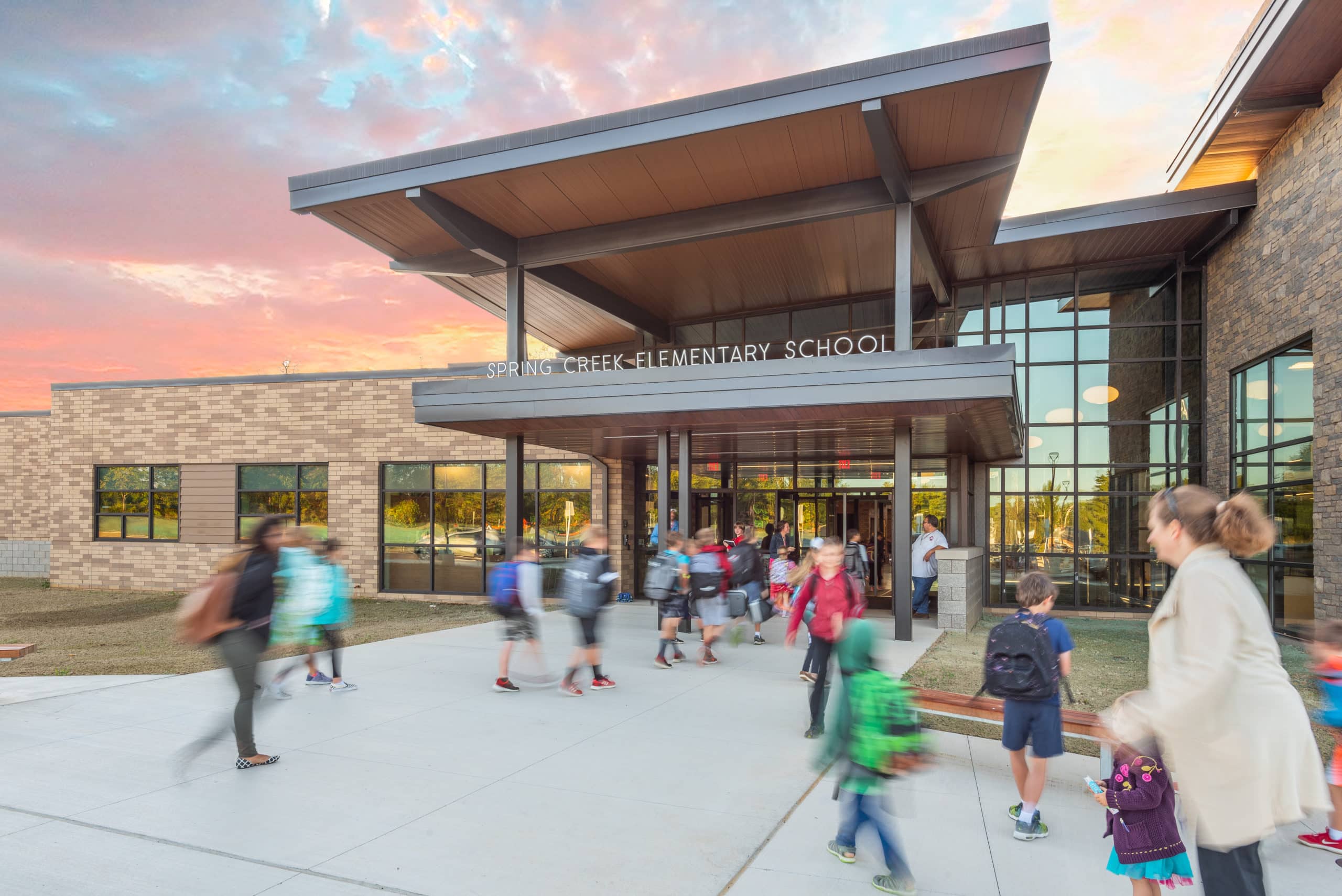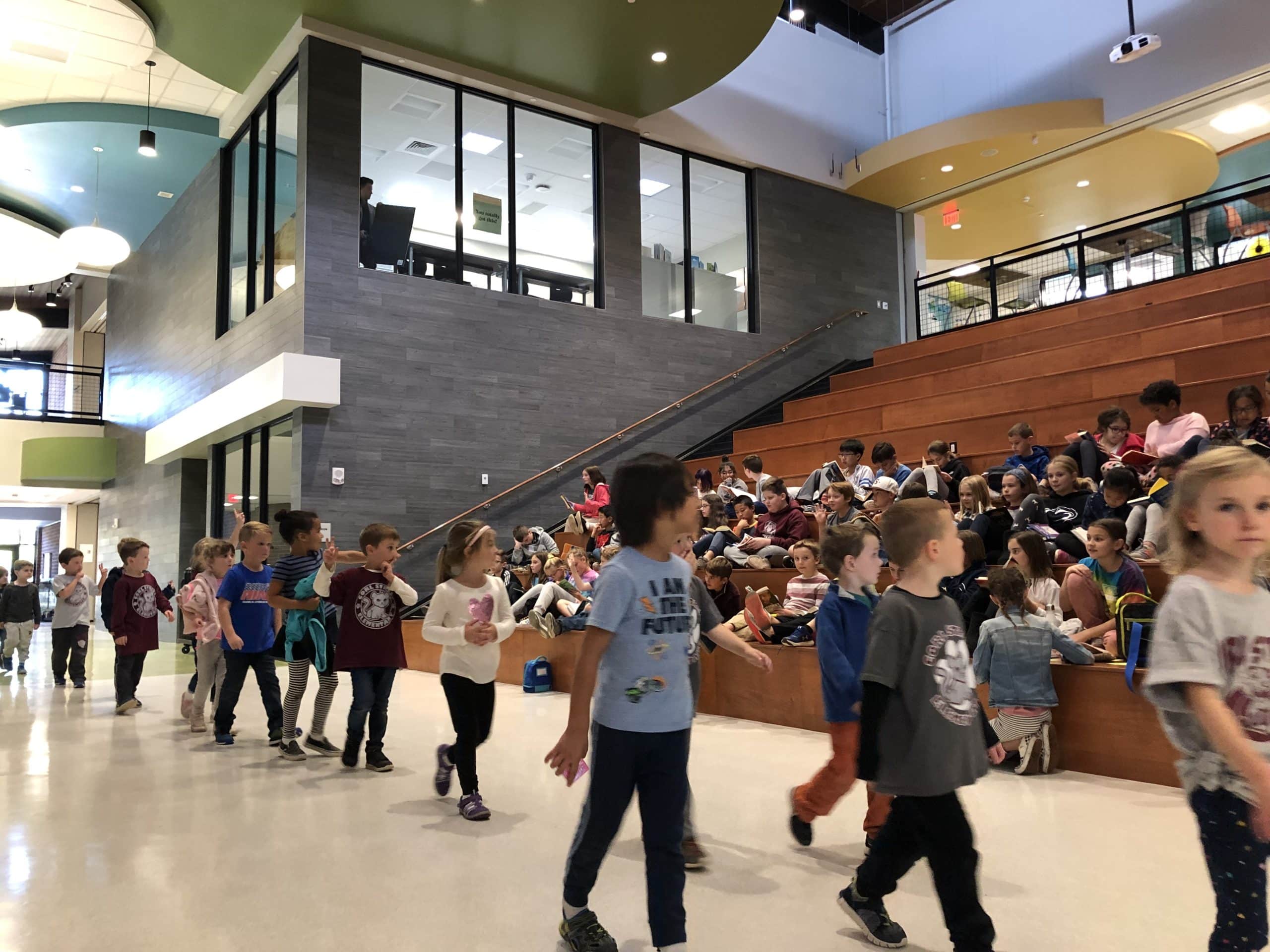Environmentally friendly features are noteworthy and vital components of State College Area School District’s new buildings.
 Spring Creek Elementary School
Spring Creek Elementary School
Of all the sustainability features in State College Area School District’s new buildings, the biggest are the hardest to see.
Hidden from view, sprawling rooftop solar arrays help power the Delta Program and the Corl Street, Radio Park and Spring Creek elementary schools. Their panels supply 20 percent of the three elementary schools’ electricity and 10 percent of Delta’s — just one of several factors contributing to the buildings’ top Leadership in Energy and Environmental Design ratings from the U.S. Green Building Council.
State High and Delta are LEED Gold certified, but bragging rights go to the elementary schools. Each is LEED Platinum certified, the highest level shared by only three other schools in Pennsylvania.
Alternative and Clean Energy Program grants of $1.7 million to $2 million from the state for each building — totaling $9.7 million — helped fund such environmentally friendly features as cool white roofs that do not raise site temperatures. As a result of designs and materials that promote conservation, the buildings save energy. Spring Creek’s usage, for example, has been reduced 58 percent, based on a national standard for energy-efficient buildings.
Each building also conserves water, thanks to low flow toilets, bathroom sinks and kitchen equipment, along with sensors that automatically shut off fixtures. These have trimmed consumption considerably — by 46 percent in State High’s case. Stormwater runoff is limited as well. Each site captures nearly all of its drainage in surface or subsurface basins.
 Corl Street Elementary School
Corl Street Elementary School
But to use fewer resources, SCASD didn’t suddenly have to care more. The district’s environmental focus goes back to 2008, when the district’s board of directors adopted a sustainability resolution to build schools that minimize operating costs and environmental impacts while providing state-of-the-art learning environments for students.
“Because we are investing in buildings that should last over 50 years, it is not only worthwhile but critical to have buildings that conserve energy and limit long-term costs,” board President Amber Concepcion says.
Even the construction process followed a green path. On average, recycled materials comprise 24 percent of the buildings, and 35 percent of materials came from regional sources to support local industry and limit transportation. At State High and Delta, 62 percent of construction waste was kept from landfills, slightly more than with the elementary schools.
“State College has been leading the way in sustainability for more than 10 years,”
says architect Jeff Straub, of the Crabtree, Rohrbaugh & Associates firm that designed the buildings, adding that the 2008 resolution was a milestone commitment. “That was a step few, if any, school districts have taken in Pennsylvania and even nationally.”
Along with the ACE grants, the district secured solar grants that funded half of the elementary school arrays — evidence, Straub says, of the district’s mindful financial stewardship.
“Long-term planning for our community schools can be efficient both in today’s dollars and for generations to come,” he says.
Concepcion notes that LEED features benefit students and staff members as well as the environment.
“In addition to energy efficiency, the LEED building process also prioritizes nontoxic and sustainable materials, abundant windows and daylight, healthy ventilation systems and the inclusion of walking/biking paths that connect schools to communities,” she says. “Prioritizing sustainable choices in our operations sends a vital message to our students that we care about how our choices affect their future.” •SCM




